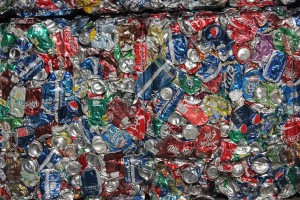Aluminum Recycling Basics
The best way to obtain aluminum for making products like foil and beverage drink cans is aluminum recycling. While the material can be also be extracted from Bauxite Ore through the Bayer process, the method often has numerous disadvantages. For instance, it is too expensive. It also requires a lot of energy. On the other hand, recycling aluminum only requires about 5 percent of the energy used to obtain new aluminum.
How Scrap Aluminum is obtained
Consumers are always advised to throw soda cans and used aluminum foils among other aluminum products into a recycle bin. These bins are normally emptied periodically and the scrap materials sent to recycling plants. Each city has its own regulations regarding collection and disposal of recyclable waste like aluminum scrap.
The Process of Recycling Aluminum
At the recycling plant, aluminum scrap is first separated from other waste materials using an eddy current separator. Scrap aluminum is then shredded into small pieces that are equal in size. This is simply to increase their surface to volume ratio; making it easy to separate them. The pieces of aluminum scrap are then cleaned through mechanical and chemical processes to get rid of aluminum oxide, paint and dirt among other impurities. The clean pieces are then blocked to prevent them from developing an oxide layer when exposed to oxygen.
 Blocks of cleaned shredded pieces of aluminum scrap are then placed into the furnace for melting. The temperature inside the furnace ranges from 650 degrees Celsius to about 850 degrees Celsius. This intense heat changes scrap aluminum into a melt. In the molten state, aluminum dissociates easily from hydrocarbon impurities, hydrogen and water vapor. This process is normally done in the presence of chlorine and nitrogen gas. These two gasses are normally obtained from ammonium perchlorate, which decomposes into nitrogen, chlorine and oxygen when heated. Samples of the material must be tested through spectroscopic analysis to determine what needs to be added to make different types of alloys. Materials that can be added to make aluminum alloys include copper, zinc, manganese, magnesium and silicon.
Blocks of cleaned shredded pieces of aluminum scrap are then placed into the furnace for melting. The temperature inside the furnace ranges from 650 degrees Celsius to about 850 degrees Celsius. This intense heat changes scrap aluminum into a melt. In the molten state, aluminum dissociates easily from hydrocarbon impurities, hydrogen and water vapor. This process is normally done in the presence of chlorine and nitrogen gas. These two gasses are normally obtained from ammonium perchlorate, which decomposes into nitrogen, chlorine and oxygen when heated. Samples of the material must be tested through spectroscopic analysis to determine what needs to be added to make different types of alloys. Materials that can be added to make aluminum alloys include copper, zinc, manganese, magnesium and silicon.
The furnace is then tapped and the melt cast into ingots, large slabs, billets, rods or atomized into powder. The melt can also be transported as it is to manufacturing facilities.
Advantages of Aluminum Recycling
Aluminum recycling is a more viable option compared to extracting the material from its ore. It is cheaper and more energy efficient. Through this process, 95 percent of energy used to obtain pure aluminum is saved. Every part of a used aluminum can is 100 percent recyclable, so nothing goes to waste. It takes about only one month for a used aluminum can to be recycled, used for packaging and returned back to consumers.
Important Points to Note about Aluminum Recycling
Aluminum takes around four centuries to degrade naturally, so disposing it off as regular waste is not environmentally friendly. Aluminum has a unique quality that allows it to be recycled numerous times without breaking down. In theory, there is enough supply of aluminum already in circulation to satisfy all industry needs. However, a steady supply can only be guaranteed if aluminum recycling is embraced globally.
